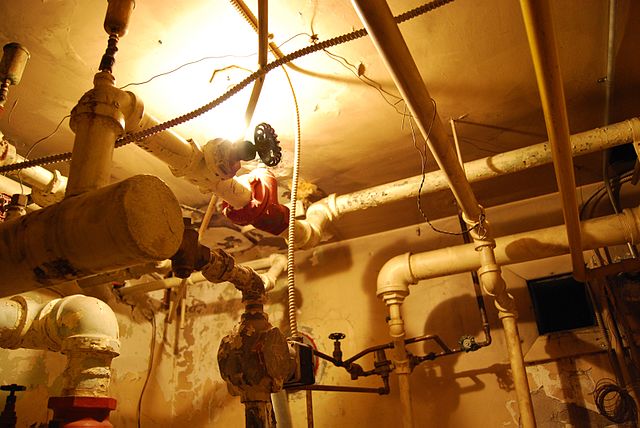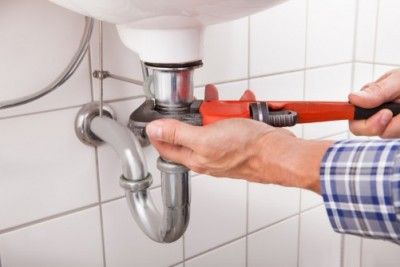How The Anatomy of Your House's Plumbing System Matters
How The Anatomy of Your House's Plumbing System Matters
Blog Article
Listed here below you can discover a good deal of quality help and advice when it comes to Anatomy of a House: Understanding the Components.

Comprehending exactly how your home's plumbing system works is vital for each house owner. From delivering clean water for drinking, cooking, and showering to securely getting rid of wastewater, a properly maintained plumbing system is important for your family's health and convenience. In this detailed guide, we'll check out the elaborate network that makes up your home's plumbing and deal ideas on maintenance, upgrades, and handling typical problems.
Introduction
Your home's plumbing system is more than just a network of pipes; it's a complicated system that ensures you have access to clean water and effective wastewater removal. Understanding its components and how they work together can help you prevent pricey fixings and make certain every little thing runs efficiently.
Standard Elements of a Pipes System
Pipelines and Tubes
At the heart of your pipes system are the pipelines and tubes that bring water throughout your home. These can be made from different products such as copper, PVC, or PEX, each with its benefits in regards to toughness and cost-effectiveness.
Fixtures: Sinks, Toilets, Showers, etc.
Components like sinks, commodes, showers, and bathtubs are where water is used in your home. Recognizing just how these components link to the plumbing system helps in detecting troubles and preparing upgrades.
Valves and Shut-off Factors
Valves regulate the circulation of water in your plumbing system. Shut-off shutoffs are essential throughout emergency situations or when you need to make fixings, enabling you to separate parts of the system without interrupting water flow to the entire residence.
Water System System
Main Water Line
The primary water line connects your home to the local supply of water or an exclusive well. It's where water enters your home and is distributed to different components.
Water Meter and Pressure Regulatory Authority
The water meter procedures your water use, while a pressure regulator makes sure that water flows at a secure pressure throughout your home's pipes system, avoiding damages to pipelines and fixtures.
Cold Water vs. Warm water Lines
Comprehending the difference between cold water lines, which provide water directly from the primary, and warm water lines, which lug heated water from the hot water heater, helps in fixing and preparing for upgrades.
Drainage System
Drain Pipes Piping and Traps
Drain pipes lug wastewater away from sinks, showers, and bathrooms to the sewage system or septic tank. Catches prevent drain gases from entering your home and additionally trap debris that can cause blockages.
Air flow Pipes
Ventilation pipelines permit air right into the drainage system, protecting against suction that could reduce drain and create traps to vacant. Proper ventilation is necessary for maintaining the stability of your pipes system.
Relevance of Proper Drain
Making sure correct drainage prevents backups and water damages. Frequently cleaning up drains pipes and maintaining catches can prevent expensive fixings and extend the life of your pipes system.
Water Heating System
Kinds Of Hot Water Heater
Hot water heater can be tankless or conventional tank-style. Tankless heating systems warmth water on demand, while storage tanks save warmed water for immediate usage.
Updating Your Plumbing System
Reasons for Updating
Updating to water-efficient fixtures or replacing old pipelines can boost water top quality, lower water bills, and boost the worth of your home.
Modern Pipes Technologies and Their Benefits
Check out innovations like clever leak detectors, water-saving toilets, and energy-efficient hot water heater that can conserve cash and reduce ecological impact.
Cost Factors To Consider and ROI
Compute the ahead of time costs versus long-term cost savings when thinking about pipes upgrades. Several upgrades pay for themselves through decreased utility expenses and less fixings.
Just How Water Heaters Attach to the Plumbing System
Understanding how water heaters link to both the cold water supply and hot water circulation lines assists in detecting concerns like inadequate hot water or leaks.
Maintenance Tips for Water Heaters
Regularly purging your hot water heater to eliminate sediment, checking the temperature level settings, and examining for leaks can extend its life expectancy and improve energy efficiency.
Usual Pipes Concerns
Leakages and Their Causes
Leakages can happen because of aging pipelines, loosened fittings, or high water pressure. Resolving leakages immediately prevents water damages and mold development.
Blockages and Blockages
Obstructions in drains pipes and toilets are often brought on by flushing non-flushable items or an accumulation of grease and hair. Making use of drain displays and being mindful of what decreases your drains can prevent obstructions.
Indicators of Pipes Issues to Watch For
Low tide pressure, slow drains, foul odors, or abnormally high water costs are indications of potential plumbing troubles that must be dealt with without delay.
Pipes Maintenance Tips
Normal Assessments and Checks
Schedule yearly pipes evaluations to catch issues early. Seek indicators of leaks, deterioration, or mineral accumulation in taps and showerheads.
Do It Yourself Upkeep Tasks
Basic tasks like cleansing tap aerators, checking for commode leakages using color tablet computers, or insulating revealed pipes in cold environments can prevent major pipes problems.
When to Call a Professional Plumber
Know when a pipes concern needs professional expertise. Trying complicated repair services without proper expertise can bring about even more damage and higher fixing costs.
Tips for Decreasing Water Use
Simple routines like dealing with leakages quickly, taking much shorter showers, and running complete lots of laundry and meals can preserve water and reduced your utility expenses.
Eco-Friendly Pipes Options
Take into consideration lasting plumbing materials like bamboo for floor covering, which is durable and environment-friendly, or recycled glass for counter tops.
Emergency situation Preparedness
Steps to Take Throughout a Pipes Emergency situation
Know where your shut-off valves are located and exactly how to switch off the water supply in case of a burst pipe or significant leakage.
Relevance of Having Emergency Situation Contacts Useful
Keep contact info for regional plumbings or emergency situation services readily available for quick action throughout a pipes situation.
Ecological Influence and Conservation
Water-Saving Fixtures and Appliances
Installing low-flow faucets, showerheads, and toilets can considerably decrease water usage without sacrificing performance.
DIY Emergency Situation Fixes (When Applicable).
Short-term solutions like utilizing duct tape to spot a leaking pipeline or positioning a pail under a trickling tap can decrease damages till a specialist plumbing technician shows up.
Conclusion.
Understanding the makeup of your home's pipes system encourages you to keep it effectively, conserving money and time on repairs. By adhering to regular upkeep regimens and remaining educated concerning modern-day pipes technologies, you can guarantee your pipes system runs successfully for several years ahead.
HOW YOUR PLUMBING SYSTEM WORKS
Which Pipes Do What?
Blue lines = fresh water supply entering the building Red lines = hot water supply entering the building Grey lines = pipes carrying waste away from the building and venting pipes carrying gases away from the building (through the roof) YOUR MAIN PLUMBING SYSTEMS
There are two main plumbing systems that support your home s basic plumbing needs one that brings clean water into your home, and one that sends dirty water away from your home. Connected to the toilet, bath, shower, and other faucets in your home, these two systems keep your water flowing in the right directions.
ACCESSING FRESH WATER
Fresh and clean water is brought into your home through the main water supply line . Filtered through one pipe, this water is pressured to flow into the various fixtures in your home at any given time.
This water can be sourced from a well located on your property, a pond or river (mostly cottages), or, as in most cases, from the city s municipal water treatment centre. However, it is important to note that water that is untreated, such as the water siphoned from ponds or rivers, may not be safe to drink. Personal water supplies always need to be treated for hardness and contaminants before consumed.
MUNICIPAL WATER SUPPLIES
Improve taste and odour Remove sediment Eliminate hardness Reduce chlorine COLD WATER SUPPLY VS. HOT WATER SUPPLY
Cold water flows into your home or building through the service line, which then distributes hot or cold water to your fixtures. This line is most commonly run through a central column that runs floor to floor. Hot water runs in short and straight pipes as the longer the pipeline, the more heat that will be lost in the transfer. Having shorter pipes also allows residents to access hot water more quickly.
WASTE WATER SYSTEM
Your wastewater system is divided into two parts pipes that send wastewater away from your home and venting pipes that send sewer gas away from your home. Sewage water travels through pipes that flush the water and waste towards local sewers that are operated and managed by your city or town. Most sewer systems rely on gravity to move the wastewater to where it needs to go.
The further away from your toilet or sink, the larger wastewater pipes become. This allows for waste to be disposed of from various parts of your home or business at once without pipe blockages. The angle and flow of these pipes are also essential for keeping your waste pipes clear of build up.
https://harrisplumbing.ca/how-your-home-plumbing-system-works/

We had been shown that write-up about Exploring Your Homes Plumbing Anatomy through an acquaintance on a different web page. Enjoyed our content? Please share it. Let others check it out. Many thanks for going through it.
Visit My Site Report this page